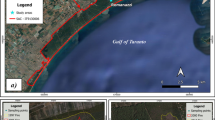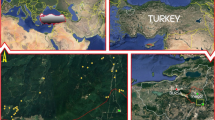Abstract
We inventoried plant regeneration and soil compaction along mule trails to evaluate damage to forest stands and regeneration following mule hauling before and after operations in Kheyrud Forest in the Hyrcanian Forest in northern Iran. About 22% of regenerating plants on mule trails were damaged following mule logging, and damage to trees was observed. In harvested units after timber extraction, 4.3% of the total area (12 ha) was covered with mule trails. Mule passes and slope gradient, and twofold interactions between mule passes × slope gradient had no significant effect on soil bulk density (p < 0.05). Mule logging had a statistically significant effect on soil bulk density along the mule trails before and after mule passes. Soil bulk density increased significantly as mule passes increased in number. The degree and level of compaction did not differ with trail slope. With respect to damage to residual stands and seedlings, soil compaction and disturbance to soil, traditional mule logging is the preferred skidding method in the steep terrain conditions in the Hyrcanian Forest in northern Iran.
Similar content being viewed by others
References
Akay AE. 2005. Determining Cost and Productivity of Using Animals in Forest Harvesting Operations. Journal of Applied Sciences Research, 1(2): 190–195.
Dykstra DP, Heinrich R. 1996. FAO model code of forest harvesting practice. Rome: FAO, pp. 97.
Ghaffariyan MR, Durston T, Sobhani H, Marvi Mohadjer MR. 2009. Mule logging in Northern Forests of Iran: a study of productivity, cost and damage to soil and seedlings. Croatian Journal of Forest Engineering, 30(1): 67–75.
Ghaffariyan MR. 2002. Investigation of production and stand damage of mule logging in Kheyrudkenar forest. M.Sc. thesis. Natural Resources Faculty. Tehran: University of Tehran.
Heinrich R. 1985. Medium technology in wood harvesting. Logging and transport in steep terrain. Rome: FAO, pp. 46.
Jamshidi R, Jaeger D, Raafatnia N, Tabari M. 2008. Influence of two ground-based skidding systems on soil compaction under different slope and gradient conditions. Journal of Forest Engineering, 19(1): 9–16.
Jourgholami M, Majnounian B, Zobeiri M, Feghhi J. 2008. Evaluation of production and costs of mule logging in down and up slopes (case study: Kheyrud forest). Iranian Journal of Natural Resources, 61(3): 625–636.
McGonagli K. 1979. Southern horse and mule logging in Alabama. Logging system guide. US Forest Service.
Oskarshamn BP. 1983. Extraction using draught animals. Technical field note 3. Swedish Forestry Technique with Possible Applications in the Third World. Stockholm.
Rodriguez EO, Fellow AM. 1986. Wood extraction with oxen and agricultural tractors. FAO Forestry Paper No. 49. Rome.
Sessions J, Boston K, Murphy G, Wing MG, Kellogg L, Pilkerton S, Zweede JC, Heinrich R. 2007. Harvesting operation in the Tropics. Berlin: Springer-Verlag.
Shrestha SP. 2002. Opportunities and limitation of animal logging in the US South. PhD. Theses. Auburn, Alabama: Auburn University, p. 194.
Shrestha SP, Lanford BL, Rummer R, Dubois M. 2008. Soil Disturbances from Horse/Mule Logging Operations Coupled with Machines in the Southern United States. Journal of Forest Engineering, 19(1): 17–24.
Thompson MA, Sturos JA. 1984. Bunching with low-investment systems in northern hardwood pole thinning, American Society of Agricultural Engineers, Paper No. 84-1599, p. 32.
Toms CW, Dubois MR, Bliss JC, Wilhait JH, Rummer RB. 2001. A survey of animal-powered logging in Alabama. Southern Journal of Applied Forestry, 25(1): 17–24.
Wackerman AE, Hasgestein WD, Michell AS. 1966. Harvesting Timber Crops. New York: McGraw-Hill.
Wang LH. 1997. Assessment of animal skidding and ground machine skidding under mountain condition. Journal of Forest Engineering, 8(2): 57–64.
Wang LH. 1999. Environmentally Sound Timber Extracting Techniques for small tree Harvesting, Presentation at the 1999 ASAE Annual International Meeting Sponsored by ASAE, Toronto, Canada. p. 7.
Author information
Authors and Affiliations
Corresponding author
Rights and permissions
About this article
Cite this article
Jourgholami, M., Majnounian, B. Traditional mule logging method in Hyrcanian Forest: a study of the impact on forest stand and soil. Journal of Forestry Research 24, 755–758 (2013). https://doi.org/10.1007/s11676-013-0370-9
Received:
Accepted:
Published:
Issue Date:
DOI: https://doi.org/10.1007/s11676-013-0370-9




